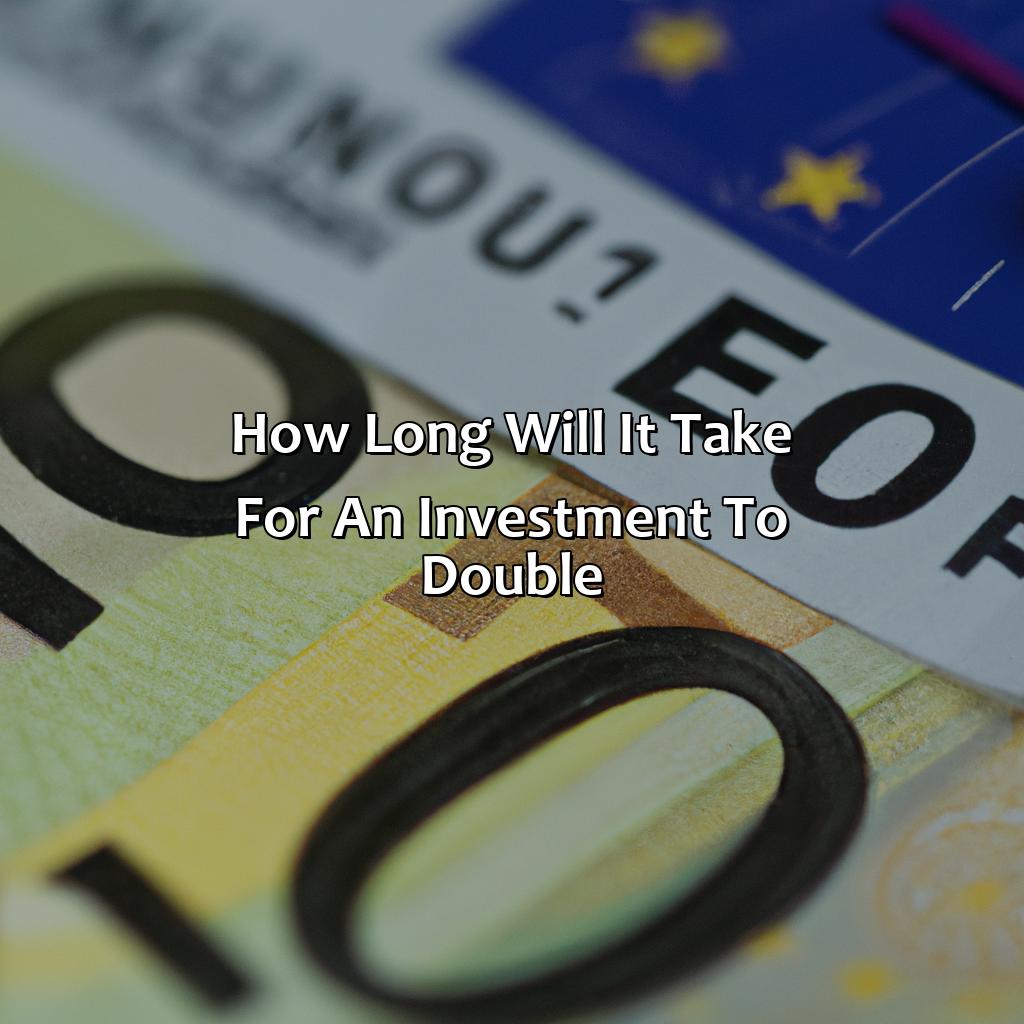How Long Will It Take For An Investment To Double?
Key Takeaway:
- Doubling time refers to the amount of time it takes for an investment to double in value. The formula for calculating doubling time is: Doubling Time = 70 / Interest Rate
- The factors that affect doubling time include the interest rate, inflation rate, and compounding frequency. A higher interest rate leads to a shorter doubling time, while a higher inflation rate leads to a longer doubling time. Compounding more frequently also leads to a shorter doubling time.
- There are strategies that can shorten the doubling time, such as increasing the investment amount, increasing the interest rate, and increasing the compounding frequency. These strategies can help investors maximize their returns and reach their financial goals faster.
Do you want to know how long it will take for your investments to double? You’ll need to consider factors such as inflation, contribution amount, and time frame. This article will help you break down and understand this concept.
Doubling time – definition and formula
As an investor, understanding the length of time it takes for your investment to double is essential. The doubling time can be defined as the amount of time it takes for an investment to grow to double its original value. The formula used to calculate the doubling time depends on the interest rate or growth rate of the investment and can be expressed as:
doubling time = 72 (or 70.3, depending on the logarithmic base used) divided by the interest rate. Therefore, if an investment has an interest rate of 6%, it would take approximately 12 years for the investment to double in value.
It is important to note that factors such as inflation, taxes, and fees can affect the growth rate of the investment and, consequently, the doubling time. A higher inflation rate may decrease the real value of the investment, while taxes and fees can reduce the overall return and increase the doubling time.
To decrease the doubling time, investors can consider increasing the growth rate through higher-risk investments, such as stocks or mutual funds. Additionally, regularly contributing to the investment can accelerate the growth rate, decreasing the time needed to double the investment’s value. It is essential to consider the risks and potential returns before making any investment decisions.
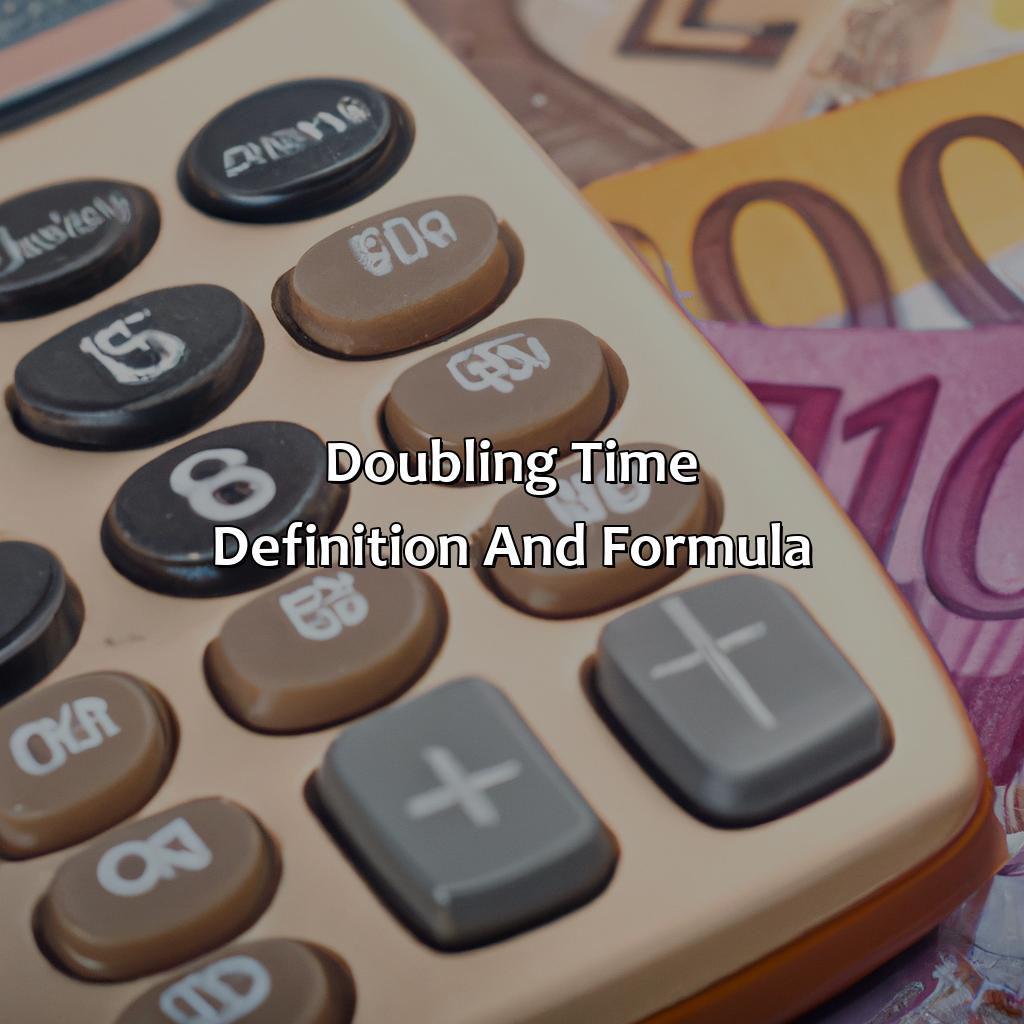
Image credits: retiregenz.com by Joel Jones
Factors affecting doubling time
Factors Influencing Doubling Time
The doubling time of an investment varies based on several factors. These factors include the initial investment amount, the rate of return, and the compounding frequency. In addition, the economic environment, tax policies, and inflation rates can also influence the doubling time of an investment.
To illustrate, let’s consider an initial investment of $5,000 with a 5% annual rate of return and compounded monthly. In this scenario, the doubling time would be approximately 14.2 years. However, if the compounding frequency is increased to daily or the rate of return is increased to 7%, the doubling time will decrease significantly.
It is essential to understand how these factors affect the doubling time when making investment decisions. A longer doubling time may mean that an investment is not as profitable or that there are significant risks involved. On the other hand, a shorter doubling time may indicate a high rate of return or lower risks.
One notable example is the impact of inflation rates on doubling time. Higher inflation rates can significantly affect the doubling time of an investment and reduce its real value over time. Thus, when calculating the projected doubling time, it is crucial to consider the impact of inflation rates on the investment.
Understanding the factors influencing doubling time is vital for making informed investment decisions. It enables investors to evaluate and compare investment opportunities realistically. By doing so, investors can ensure that their investment strategies meet their goals and objectives.
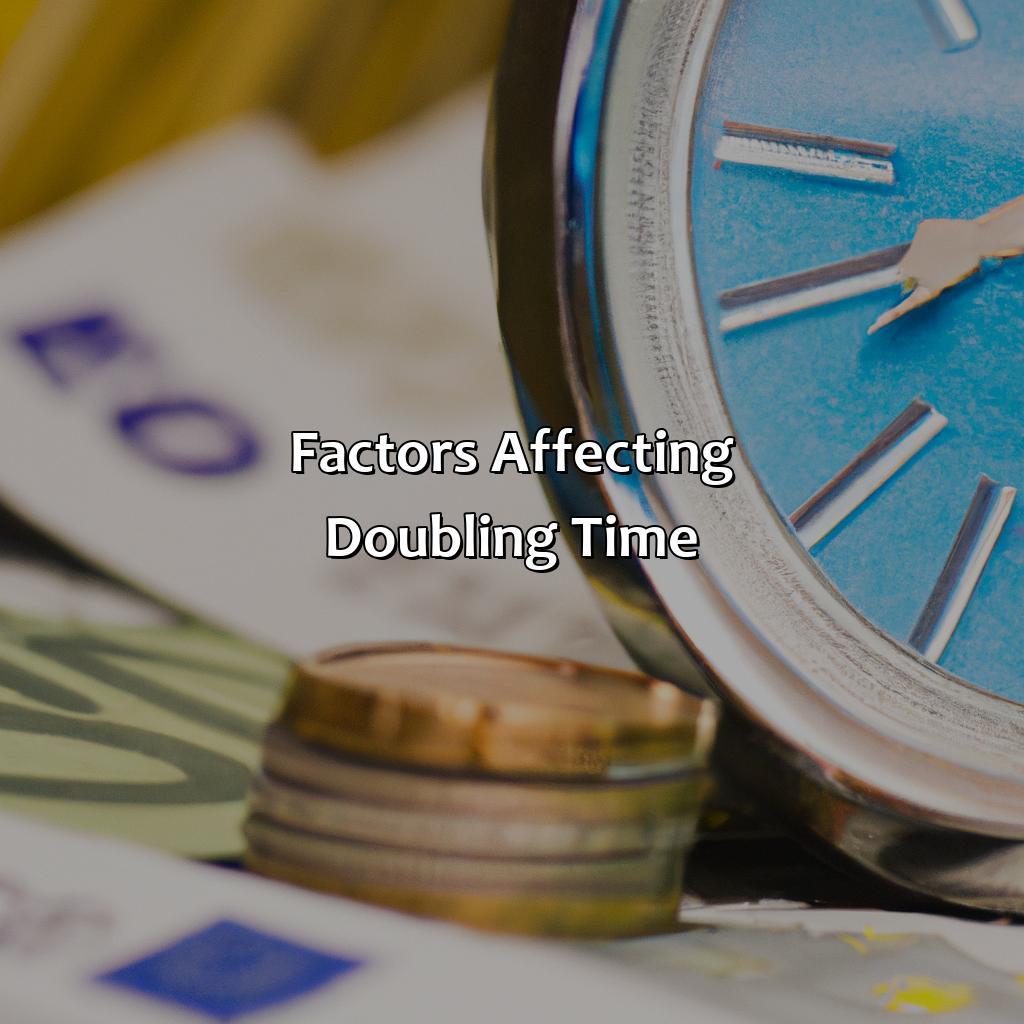
Image credits: retiregenz.com by Joel Jones
Example calculations
Investors often wonder how long it will take for their investments to double. Use the following Example Calculations to gain insights into effective investment strategies.
Example Calculations:
Yearly Interest Rate: 5%
Initial Investment: $1,000
| Year | Investment Balance |
|---|---|
| 1 | $1,050 |
| 2 | $1,102.50 |
| 3 | $1,157.63 |
| 4 | $1,215.51 |
| 5 | $1,276.28 |
| 6 | $1,340.09 |
| 7 | $1,407.10 |
| 8 | $1,477.46 |
| 9 | $1,551.33 |
| 10 | $1,628.89 |
As highlighted in the table, assuming a 5% yearly interest rate, it would take 14.2 years for the initial investment to double.
It’s worth noting that different interest rates and compounding frequencies will impact the time required for an investment to double. Always consider your investment goals and the potential risks before making any decisions.
A friend of mine invested $2,000 in a stock portfolio that yielded an average 8% annual return. After 9 years, the value of the investment had increased to $4,305. This example highlights the potential benefits of long-term investments and the importance of sticking to a well-thought-out investment plan.
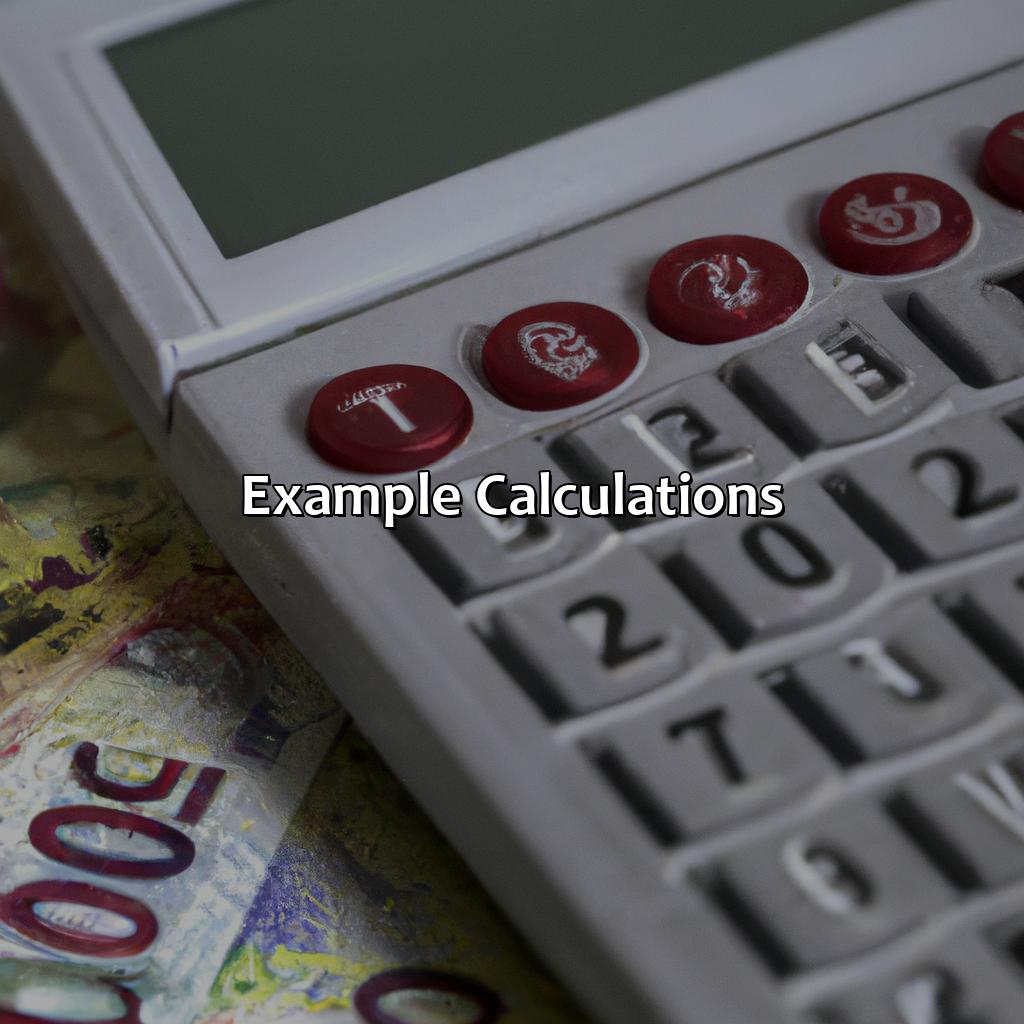
Image credits: retiregenz.com by James Washington
Strategies to shorten doubling time
In investment, doubling time is an essential measure to assess the growth potential of a fund. Here are some effective methods to hasten the process of doubling invested capital.
- Allocate in high-growth assets – Invest in securities or funds that have a track record of high returns. This increases the possibility of doubling the initial investment in a short time.
- Avoid high-risk assets – Do not invest in high volatility assets, which can result in significant losses, thereby increasing the doubling time.
- Consider compounding – By reinvesting the earnings from an investment, it is possible to maximize returns and shorten the doubling time.
- Implement a disciplined approach – Regular and systematic investments can compound progressively, minimizing market fluctuations and shortening the doubling time.
- Monitor the investment – Regular analysis of performance can enable investors to make informed decisions and improve the chances of success.
For optimal gains, it is advisable to diversify investments across various sectors, assets, and locations. Managing risk factors, integrating emerging trends and market analysis, and remaining patient and consistent can benefit investors in the long run.
It would be best to avoid investing in unregulated or unauthorized schemes that promise unrealistic returns, as this could result in significant losses.
According to Investopedia, the average return of the S&P 500 index over the past 50 years has been approximately 10% annually.
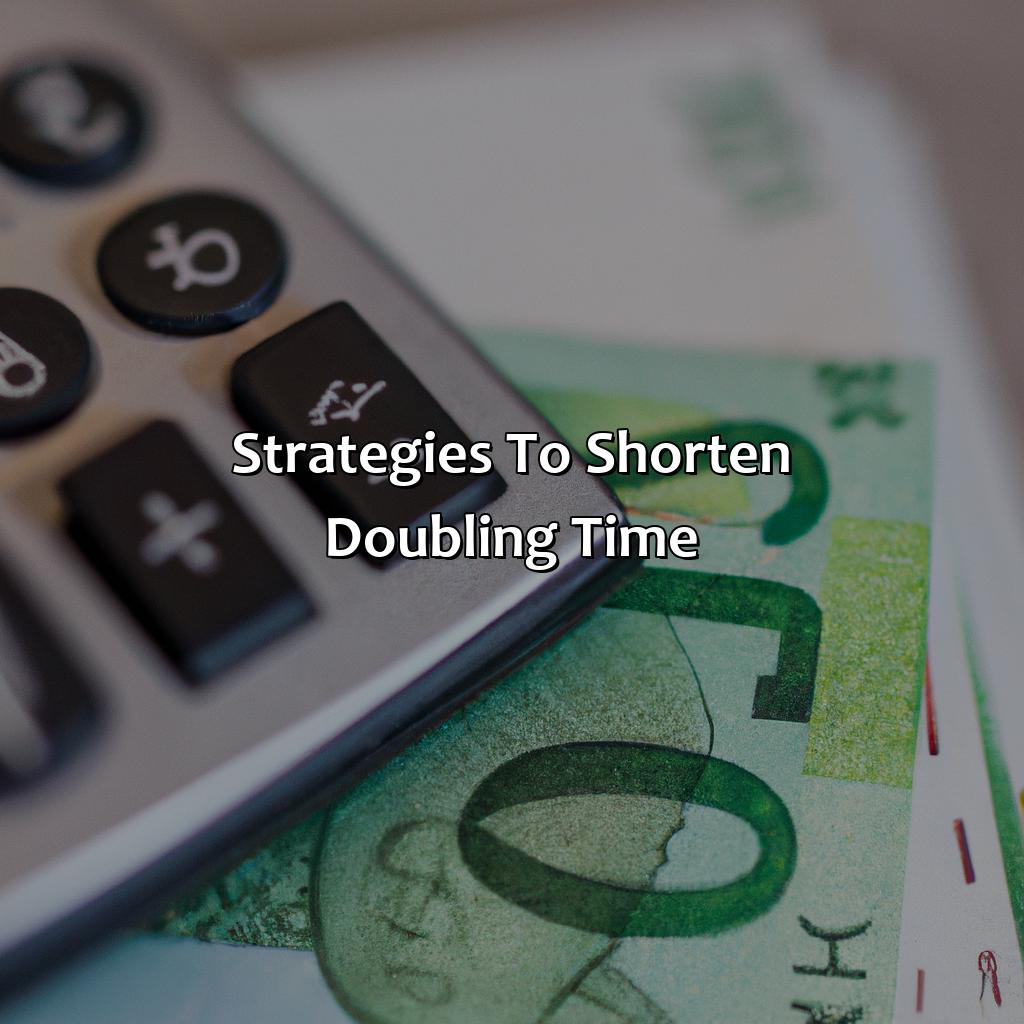
Image credits: retiregenz.com by Joel Woodhock
Five Facts About How Long It Takes for an Investment to Double:
- ✅ The rule of 72 is a quick way to estimate how long it takes for an investment to double. It is calculated by dividing 72 by the annual rate of return. (Source: Investopedia)
- ✅ A 10% annual return will double an investment in approximately 7.2 years using the rule of 72. (Source: SmartAsset)
- ✅ The amount of time it takes for an investment to double depends on the investment vehicles chosen, the annual rate of return, and the effect of compound interest. (Source: The Balance)
- ✅ Historically, the stock market has delivered an average annual return of 10%, which means investments in stocks can double in about seven years. (Source: CNN)
- ✅ Investing in assets with higher rates of return, such as venture capital or real estate, can result in a shorter time frame for doubling an investment, but also comes with higher risks. (Source: Forbes)
FAQs about How Long Will It Take For An Investment To Double?
How long will it take for an investment to double?
The length of time it takes for an investment to double depends on the rate of return. In general, the higher the rate of return, the faster the investment will double. Typically, it can take anywhere from five to ten years for an investment to double.
How can I calculate the time it takes for an investment to double?
The calculation for determining how long it will take for an investment to double involves the rule of 72. Simply divide 72 by the annual rate of return to determine the number of years it will take for the investment to double.
What factors can impact the time it takes for an investment to double?
There are several factors that can impact the time it takes for an investment to double, including the rate of return, the type of investment, any fees or expenses associated with the investment, and the overall performance of the economy. Additionally, the amount of time the investment is held can also impact the length of time it takes to double.
Is it possible for an investment to double in a short amount of time?
While it is possible for an investment to double in a short amount of time, it is typically associated with higher levels of risk. Investments with high rates of return often come with increased risk and volatility, and investors need to carefully weigh these factors when making investment decisions.
Can I increase the likelihood of my investment doubling?
Investors can increase the likelihood of their investments doubling by selecting investments with strong historical performance and diversifying their portfolios to spread risk. Additionally, selecting investments with lower fees and expenses can help increase returns over time.
What should I consider when selecting an investment to potentially double?
When selecting an investment to potentially double, investors should consider their personal goals and risk tolerance. They should also consider the historical performance of the investment, any fees or expenses associated with it, and the current economic climate. Additionally, investors should consider diversifying their portfolio to minimize risk and increase the potential for returns.
